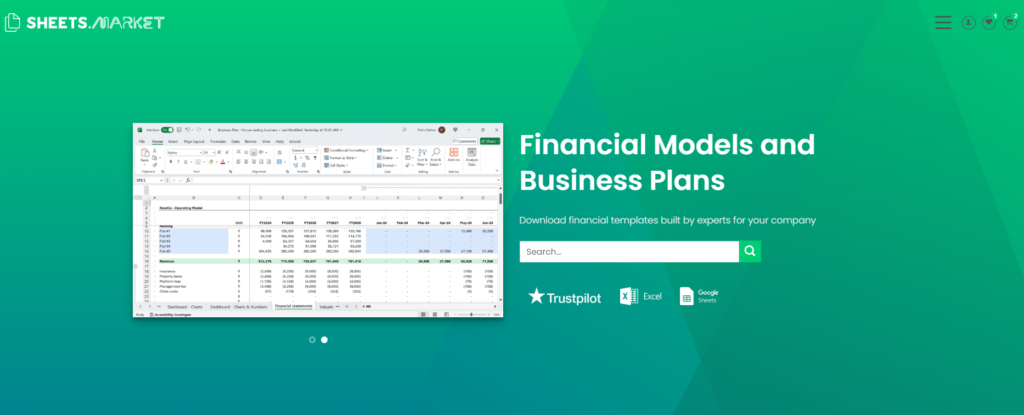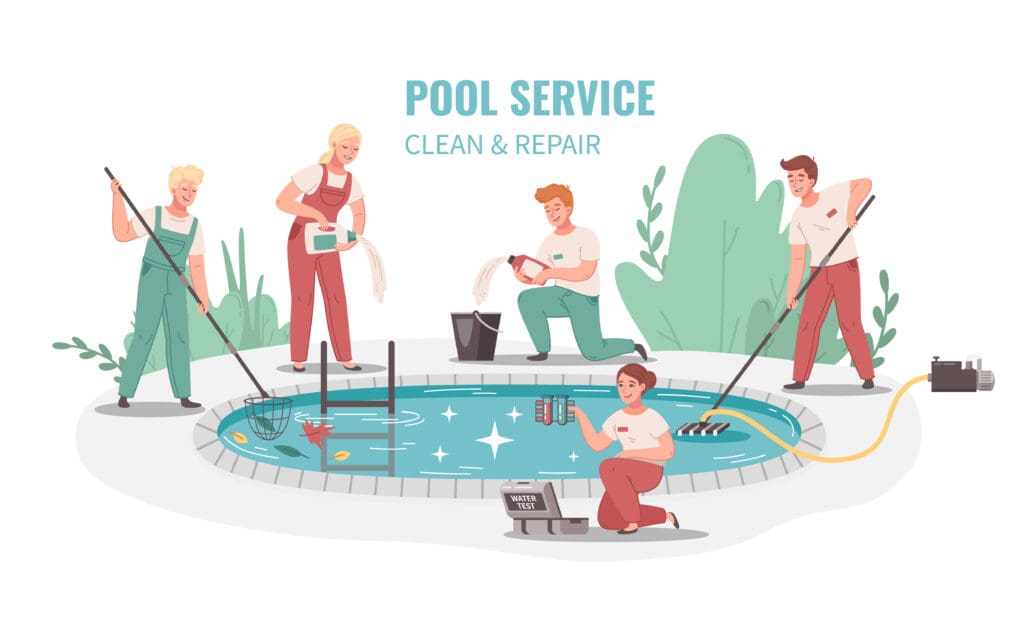Business Planning & Strategy, Financial Models
Pool Cleaning Business: Costs, Revenue Potential & Profit Margins
A pool cleaning business operates in a high-retention, recurring service model where profitability depends on route density, technician efficiency, and contractual monthly billing. With low CapEx and minimal inventory, the model generates strong cash flow when structured around geographic clustering, add-on service upsells, and tight scheduling. Profit is earned through repeat volume and labor control and not only single large jobs.
Asset Configuration
CapEx is low, centered on service vehicle outfitting, equipment kits, and chemical storage. A typical operation launches with 1 to 2 trucks, each capable of servicing 8 to 12 pools per day.
| Asset Category | Cost Range (USD) | Notes |
|---|---|---|
| Service Vehicle (truck or van) | 20,000 to 35,000 | Used or leased, with racks and chemical containment |
| Cleaning Equipment and Tools | 3,000 to 6,000 | Poles, nets, vacuums, test kits, brushes |
| Initial Chemical Inventory | 2,000 to 4,000 | Chlorine, algaecide, acid, stabilizers |
| Branding, Signage, Uniforms | 1,000 to 2,000 | Vehicle wrap, apparel, business cards |
| CRM, Scheduling, Payment System | 1,000 to 2,500 | Route optimization, billing, service logs |
Total CapEx: 27,000 to 49,500 USD for a single-service unit setup, scalable with minimal overhead.
Revenue Model
Revenue is largely subscription-based. Most clients are residential households on weekly or bi-weekly plans, priced per visit or per month. Additional income comes from repairs, filter replacements, chemical rebalancing, and seasonal services.
Annual Revenue Potential for a 1 Truck Servicing 12 Pools/Day, 5 Days/Week
| Revenue Stream | Volume Assumption | Annual Revenue (USD) |
|---|---|---|
| Standard Cleaning Contracts | 60 clients at 140 USD/month | 100,800 |
| Premium Cleaning + Chemical Plans | 20 clients at 200 USD/month | 48,000 |
| Repairs and Equipment Replacement | $1,200/month avg. | 14,400 |
| One-Off Filter and pH Balance Services | $800/month avg. | 9,600 |
| Seasonal Openings/Closings | 100 jobs/year at 150 USD avg. | 15,000 |
| Total | 187,800 |
Multi-truck operations with commercial clients or high-density zones can exceed 400,000 USD/year. Single-truck setups with wide service areas often cap around 120,000 to 180,000 USD/year.
Operating Costs
Labor (technician wages or owner time), fuel, and chemical replenishment are the primary expenses. Route efficiency and technician productivity directly impact margin. Equipment wear and insurance must be tracked and maintained.
| Cost Category | Annual Cost Range (USD) |
|---|---|
| Technician Wages (or owner equivalent) | 45,000 to 55,000 |
| Fuel, Vehicle Maintenance | 12,000 to 18,000 |
| Chemical Restocking and Supplies | 15,000 to 20,000 |
| Insurance (vehicle, liability, bond) | 5,000 to 8,000 |
| CRM, Billing, Scheduling Tools | 3,000 to 4,000 |
| Marketing, Local Ads, Referral Bonuses | 4,000 to 6,000 |
| Total Operating Costs | 84,000 to 111,000 |
EBITDA = 187,800 – 84,000 to 111,000 = 76,800 to 103,800 USD
EBITDA Margin = 40.9% to 55.3%
Well-structured operators with dense routes and minimal idle time consistently exceed 45 percent margins. Sprawling routes, over-servicing, or poor chemical cost control reduce profitability quickly.
Profitability Strategies
Profitability in pool cleaning depends on route optimization, contract mix, and technician utilization.
Start by clustering clients into tight geographic zones. A well-structured route minimizes drive time, fuel cost, and technician burnout. Aim for 10+ pools/day per technician, with no more than 5 minutes between stops.
Standardize service packages and push for auto-renew monthly billing. Offer multi-tiered plans (basic, chemical-included, premium diagnostics) to lift average revenue per user. Maintain monthly ARPU above 150 USD.
Upsell intelligently: use service logs to flag recurring issues (e.g., pressure loss, chemical imbalance), triggering proactive quotes for filter changes, pump servicing, or replastering. These add-ons carry 50 to 70 percent gross margins.
Monitor chemical usage by technician and by route. Overdosing is common and costly. Create batch dosing guidelines and monitor spend per pool monthly.
Finally, retain clients with transparent communication: send post-visit photos, automate scheduling reminders, and include seasonal tips. Referral bonuses and review campaigns can generate steady inbound volume.
So what?
A pool cleaning business is not a commodity, it is a route-optimized, subscription-leveraged, service productivity engine. Profitability is driven by technician yield per hour, chemical efficiency, and contractual volume, not the number of zip codes covered. Operators who densify routes, tier service plans, and automate retention can achieve 41 to 55 percent EBITDA margins on over 190,000 USD in annual revenue, with CapEx under 50,000 USD.

Starting and scaling a pool maintenance business requires careful planning, effective pricing strategies, and strong customer retention. With the right approach, it can become a profitable and sustainable venture. For a detailed financial breakdown and a ready-to-use financial model, check out the Pool Maintenance Financial Model Template on SHEETS.MARKET.



